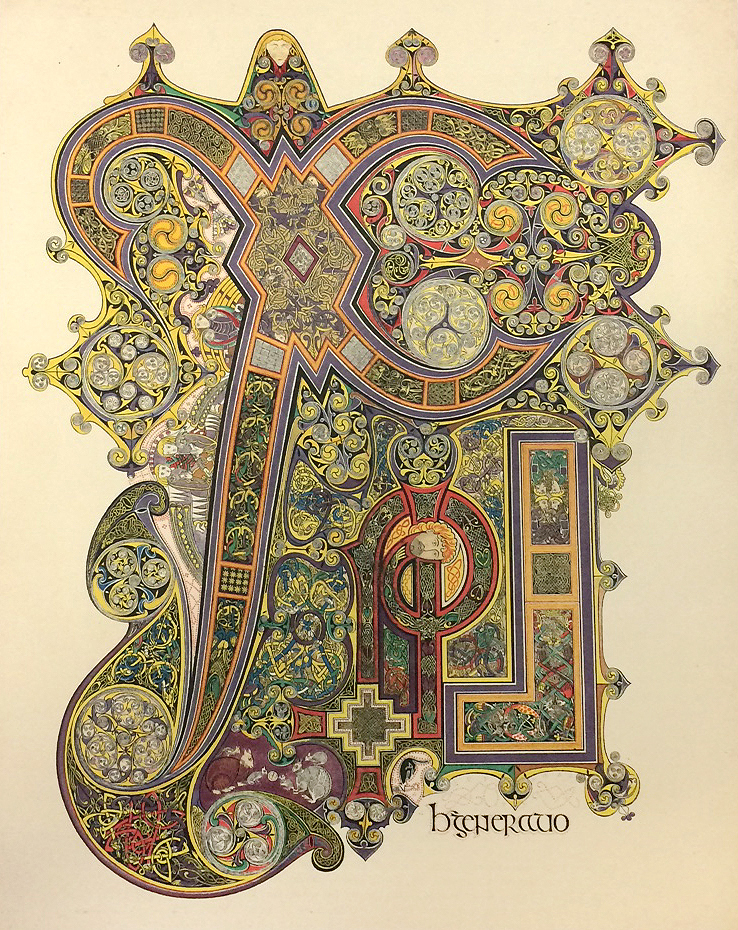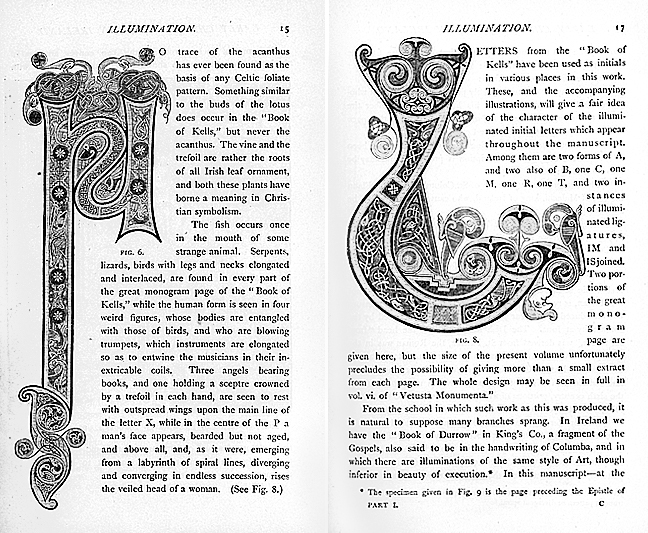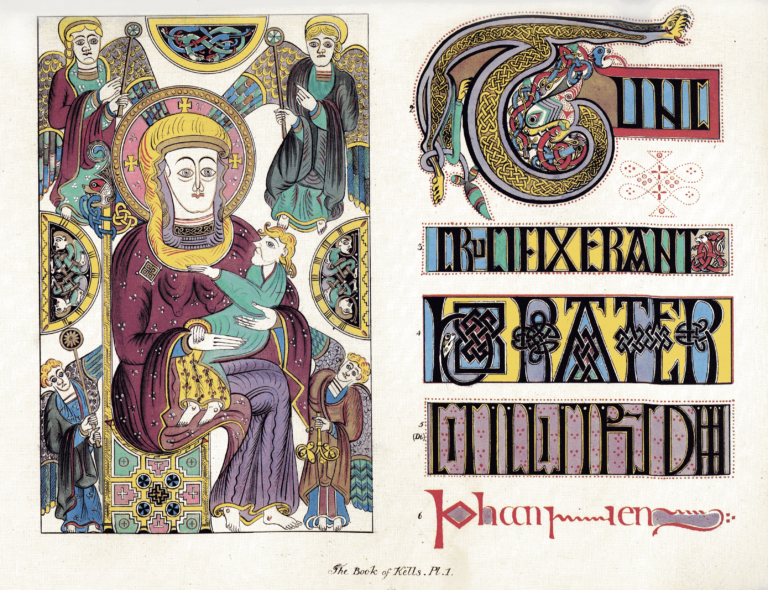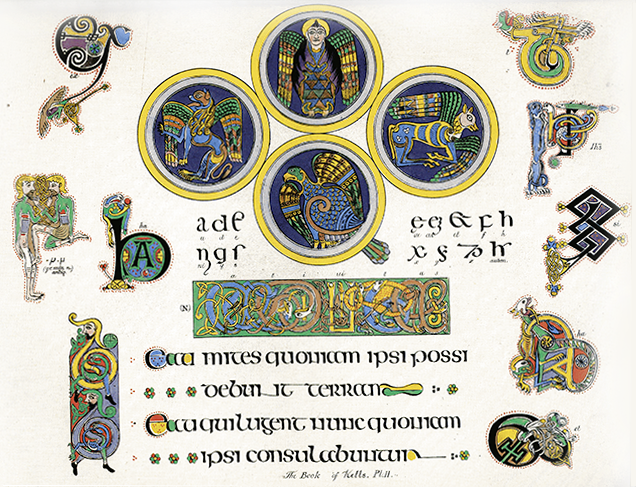Home / History / Irish History / The Book of Kells: Exploring an Irish Medieval Masterpiece / Reproducing the Book of Kells
This article is from the free online
The Book of Kells: Exploring an Irish Medieval Masterpiece


Reach your personal and professional goals
Unlock access to hundreds of expert online courses and degrees from top universities and educators to gain accredited qualifications and professional CV-building certificates.
Join over 18 million learners to launch, switch or build upon your career, all at your own pace, across a wide range of topic areas.

 Fig 1. Lithograph by Margaret Stokes of
Fig 1. Lithograph by Margaret Stokes of  Fig 2. and Fig 3. Letters taken from the Book of Kells used in the typography of Stokes’ book, Early Christian Art in Ireland (1894). CC-PD.
Fig 2. and Fig 3. Letters taken from the Book of Kells used in the typography of Stokes’ book, Early Christian Art in Ireland (1894). CC-PD.

 Fig 4. and Fig 5. Letters drawn and painted by Helen Campbell d’Olier, as reproduced in Edward O’Sullivan’s The Book of Kells (1914). CC-PD.
Fig 4. and Fig 5. Letters drawn and painted by Helen Campbell d’Olier, as reproduced in Edward O’Sullivan’s The Book of Kells (1914). CC-PD.

 Fig 6. and Fig 7. Lithographs from J.O. Westwood’s Palaeographia Sacra Pictoria: Being a Series of Illustrations of the Ancient Versions of the Bible (1843). CC-PD.
Fig 6. and Fig 7. Lithographs from J.O. Westwood’s Palaeographia Sacra Pictoria: Being a Series of Illustrations of the Ancient Versions of the Bible (1843). CC-PD.






